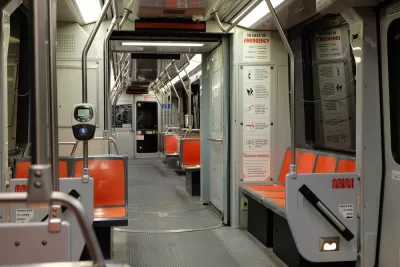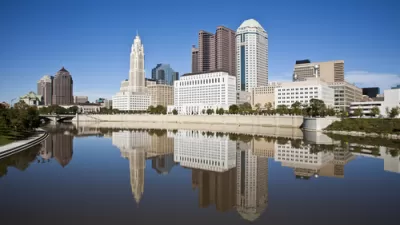The largest state in the country has been ordered to shelter in place.

Gov. Gavin Newsom announced on Thursday evening that he had directed the state Public Health Officer to issue a "stay at home" order to protect residents. The order takes effect immediately and will remain in place "until further notice."
The March 19 executive order [pdf] followed press reports that Gov. Newsom expected that 56 percent of California’s population, over 22 million people, would be infected with COVID-19 over an eight-week period without mitigation efforts.
This Order is being issued to protect the public health of Californians. The California Department of Public Health looks to establish consistency across the state to ensure that we mitigate the impact of COVID-19. Our goal is simple, we want to bend the curve, and to disrupt the spread of the virus.
The actual order [pdf] "to stay home or at their place of residence" was issued by Dr. Sonia Y. Angell, California Department of Public Health Director and State Health Officer.
It follows action that Newsom took last Sunday that requested the closure of bars, reduced occupancy of restaurants, and the self-isolation of seniors aged 65 and older.
However, six Bay Area county public health officers felt that action, which was not in the form of an edict, didn't go far enough, so they issued formal "shelter-in-place" orders affecting 6.7 million residents. By Wednesday, the three remaining Bay Area followed suit, along with neighboring counties to the north and south. And on Thursday, the Los Angeles County Public Health Officer issued a "Safer At Home Order for the Control of COVID-19 [pdf]" affecting over 10 million residents.
All three names—stay at home, shelter in place, and safer at home, are essentially the same. While legal, enforceable orders, they are not "lockdowns," which would require residents to documents upon leaving their homes, as enforced in Italy as well as Wuhan and other cities in Hubei province, China, despite the latter reporting no new additional COVID-19 cases on Thursday. As for Italy, the death toll from the deadly disease now exceeds that of China.
There is one significant way in which Angell's order differs from the county orders—how it deals with the exceptions. It refers to the U.S. Department of Homeland Security, specifically the Cybersecurity and Infrastructure Security Agency (CISA), that identifies "Essential Critical Infrastructure Workers" during the COVID-19 response.
This guidance and accompanying list [pdf] are intended to support State, Local, and industry partners in identifying the critical infrastructure sectors and the essential workers needed to maintain the services and functions Americans depend on daily and need to be able to operate resiliently during the COVID-19 pandemic response.
As for "essential services" that will remain open, the California Coronavirus (COVID-19) Response webpage (source article) lists:
- Gas stations
- Pharmacies
- Food: Grocery stores, farmers markets, food banks, convenience stores, and take-out and delivery restaurants
- Banks
- Laundromats/laundry services
The state COVID-19 updates indicates that as of March 18, 2020, there were a total of 675 positive cases, third highest after New York and Washington, respectively, and 16 deaths, second highest after Washington, according to the POLITICO live tracker.
Additional reading in media:
- Los Angeles Times: Gov. Gavin Newsom orders all Californians to stay at home
- Mercury News: Gov. Newsom expands Bay Area shelter-in-place to all of California
Related in Planetizen:
- The New Regionalism of the Coronavirus Pandemic, March 19, 2020
- Bay Area Ordered to Shelter in Place, March 17, 2020
-
A Nation of 60 Million on Lockdown, March 11, 2020
FULL STORY: Stay home except for essential needs

Planetizen Federal Action Tracker
A weekly monitor of how Trump’s orders and actions are impacting planners and planning in America.

Congressman Proposes Bill to Rename DC Metro “Trump Train”
The Make Autorail Great Again Act would withhold federal funding to the system until the Washington Metropolitan Area Transit Authority (WMATA), rebrands as the Washington Metropolitan Authority for Greater Access (WMAGA).

DARTSpace Platform Streamlines Dallas TOD Application Process
The Dallas transit agency hopes a shorter permitting timeline will boost transit-oriented development around rail stations.

San Francisco's School District Spent $105M To Build Affordable Housing for Teachers — And That's Just the Beginning
SFUSD joins a growing list of school districts using their land holdings to address housing affordability challenges faced by their own employees.

Car-Centric LA Suburb Looks to a Train-Oriented Future
City leaders in Rancho Cucamonga, the future western terminus of the Brightline West rail line to Las Vegas, want to reimagine the city as a transit-oriented, pedestrian-friendly community.

New Alaska Bitcoin Mine Would Burn as Much Energy as the State’s Largest Coal Plant
Fueled by “stranded” natural gas, the startup hopes to become the largest in the US, and to make Alaska an industry center.
Urban Design for Planners 1: Software Tools
This six-course series explores essential urban design concepts using open source software and equips planners with the tools they need to participate fully in the urban design process.
Planning for Universal Design
Learn the tools for implementing Universal Design in planning regulations.
Municipality of Princeton
Roanoke Valley-Alleghany Regional Commission
City of Mt Shasta
City of Camden Redevelopment Agency
City of Astoria
Transportation Research & Education Center (TREC) at Portland State University
US High Speed Rail Association
City of Camden Redevelopment Agency
Municipality of Princeton (NJ)





























